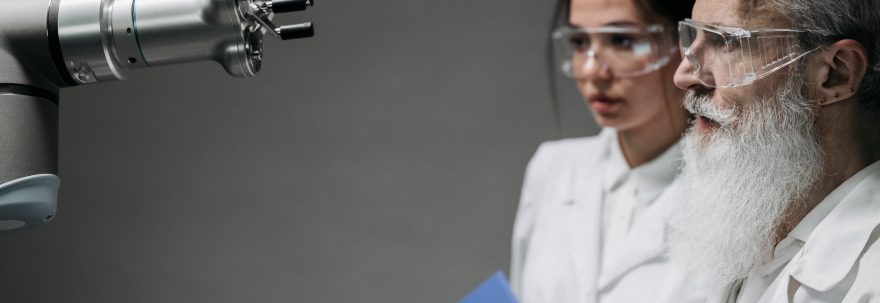Heatstroke is a leading cause of death for both adults and children. In the heat, your body temperature rises to dangerous levels as a result of increased blood flow and oxygen demand, which can occur as a result of heat stress or Exercise-Induced Heat Stroke (EIHS). A magnetic hyperthermia instrument is an effective treatment option, if available, that you can use to lower your body temperature while keeping you hydrated and out of the heat. A magnetic hyperthermia instrument uses electromagnetic fields to lower your core body temperature almost immediately to combat the effects of the heat. It’s also known as “cold therapy” or “cooling therapy” because it temporarily lowers your core body temperature by literally chucking ice onto yourself for a brief period — usually about 10 minutes — to lower your core body temperature back down safely. Because it works so quickly, this kind of treatment is also referred to as “cold therapy” again (although not all hyperthermia instruments work in such a way). This article covers how to use a magnetic hyperthermia instrument effectively. But before we get into specific details on what kind and how much ice to use, there are a few things you should know about using them safely and effectively.
What is a hyperthermia instrument?
A hyperthermia instrument is atechnology that lowers your core body temperature almost immediately after being exposed to heat, usually by exercising in hot or humid weather. The initial lowering of your core temperature is followed by a period of “cooling,” during which the magnet gently rubs against your skin, cooling you down even more. The most popular kind of hyperthermia instrument is the magnetography machine, which uses electromagnets to induce a current in your body.
How to Use a Magnetic Hyperthermia Instrument
Now that we’ve gone over what a hyperthermia instrument is, and how to use it, it’s time to get more specific about your specific model and how you should use it. There are basically two types of hyperthermia instruments: passive and active. A passive hyperthermia instrument works just like a heat pad — you put it in the room and forget about it. But whereas a heat pad simply warms you up, a hyperthermia instrument chucks ice onto you. (You can also use the term “coldCalling” to describe this kind of treatment.) A hyperthermia instrument is passive because it doesn’t use any electricity — it’s purely physical. You can place it almost anywhere that you feel heat, like a room or outdoor chair. A hyperthermia instrument is active because it uses electricity to move the magnets and generate the fields. Active hyperthermia instruments are usually battery-powered or run on gas or electricity, depending on your particular model. The table below breaks down the various types of hyperthermia instruments and their intended temperature range.
When to Use a Magnetic Hyperthermia
There are a few different situations where a magnetic hyperthermia is a good option, depending on your goals. You should use it when you’re really heat stressed — your core body temperature is around 105°F or 41°C. If you’re not in the heat season, you can use a hyperthermia instrument most of the year, and still get a significant cooling effect. But if or when you do experience heatstroke, you should use a magnetic hyperthermia instrument to lower your core body temperature as quickly as possible.
The Temperature Range for Which a Magnet Is Effective
The type of hyperthermia instrument you use will largely determine the maximum temperature that you can lower. Different types of instruments have different maximum operating temperatures, so it’s important to know the specific temperature range in which you can safely use a hyperthermia device. Here’s the general rule of thumb: higher heats, lower temps. The general rule of thumb for most heating appliances is to not put it in the room where you sleep, but rather in a location that’s far from doors and other important sources of heat. This is because electric heaters have a tendency to create heat transfer through your bedroom walls, which can potentially reach your bed.
What Can Go Wrong During a Magnetic Hyperthermia Session?
The biggest downside to using a magnetic hyperthermia is the potential for side effects. These can include mild skin irritation or flushing, muscle spasms, decreased blood flow, feeling hot or flushed, and hives or red marks on your skin. If you experience any of these side effects, discontinue the treatment and go back to your normal routine as soon as possible. A mild flush or flush-like feeling is not a concern with most magnetic hyperthermia devices. Although some people experience muscle spasms while using them, this is a very rare side effect and can be avoided by using a different brand.
The Pros and Cons of Using an Electromagnetic Hyperthermia Instrument
There are a few advantages to using an electromagnetic hyperthermia device over a magnetic one. First, you get the added benefit of being able to decrease the noise level in your room while using an electromagnetic hyperthermia device, which can make it easier to sleep while using a different hyperthermia type that generates less sound. Electromagnetic hyperthermia devices also use less electricity than a magnetography machine, which means you won’t need to worry about running out of juice or blackouts during a session. But these are all positive aspects of using an electromagnetic hyperthermia device, so we’ll get to those in a bit.
Conclusion
In conclusion, the best hyperthermia device is the one that works for you. There is no one-size-fits-all solution when it comes to dealing with heatstroke, and the best hyperthermia device for you will depend on your personal needs and preferences. While some people are sensitive to the cold, others find the hot temperature uncomfortable. Many people have difficulty sleeping in hot weather, and that’s why using a hyperthermia device is helpful.



